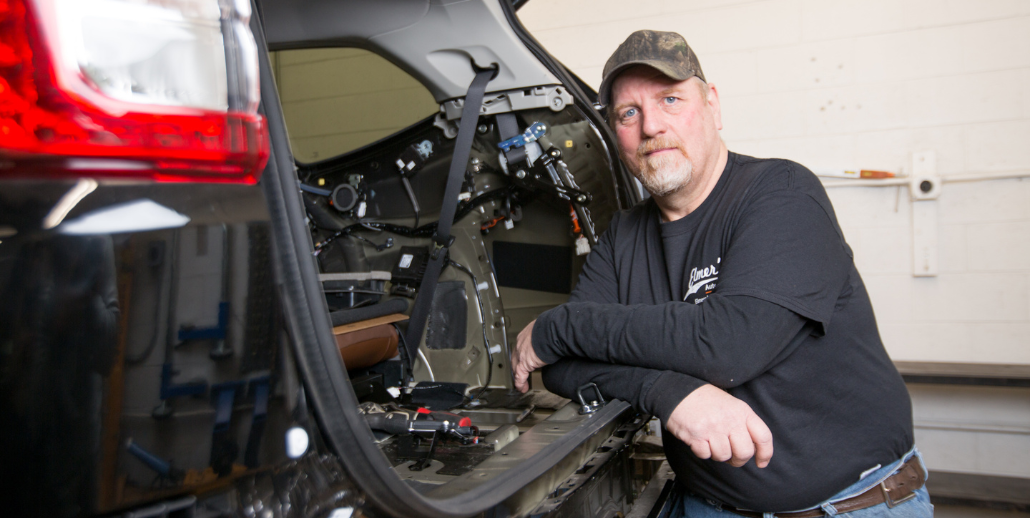In case you are not aware, your vehicle’s quarter panels can be found between your back tires and your trunk. Because they are located directly at the rear corners of your vehicle, they are fairly likely to take an impact. When a collision occurs, rear quarter panels are among the most common components to be damaged. Replacing these panels can sometimes be expensive, but it’s important to avoid used quarter panels. There are several reasons why we advise against the use of used quarter panels in collision repair.
Safety Is The Main Reason
As we said, your rear quarter panels are more likely to take damage in the event of a collision. As such, they represent an important part of your vehicle’s defenses. If one of these parts should fail under stress during a collision, there will be a greater likelihood of injury or death to anyone inside.
When you get a used quarter panel, it is very difficult to ascertain just how much damage it has sustained over its lifetime. Things like rust and stress cracking are not always obvious at first glance. Both rust and small stress-induced fractures can be hidden underneath the vehicle’s finish, making it very difficult to gauge the overall condition of the part. In many cases, parts like this have been sitting around in a junkyard for years. It simply wouldn’t be wise to trust your safety or that of your passengers to a suspect part.
Proper Repair Procedures Are Also Important
In the vast majority of cases, rear quarter panels have to be welded in place. This is done by drilling a hole and filling it with a “plug weld.” In order to avoid voiding your warranty or causing problems with your insurance coverage, that hole must be sized to a specific standard. In most cases, it’s 8mm or 10mm but the exact size varies according to the model of your vehicle.
In order to remove such a plug weld, you are going to have to use a drill to bore out and remove the weld material. By the time you are done, the hole will probably be a lot larger than 8-10mm, which means you are outside the OEM guidelines. Thus, it is virtually impossible to install a used quarter panel without going outside the official repair guidelines, which can cause many issues with the warranty and with your insurance company.
Welding Can Weaken A Quarter Panel
As we said, the process of installing a quarter panel usually involves welding. If your panel is made out of hardened steel (which many of them are), the intense heat generated by the welding process can become a problem. When steel is heated to a particular temperature, it can become harder. This may seem like a good thing, but hard doesn’t always mean strong. Materials that are extremely hard (like glass, for instance) are actually easier to shatter. The best steels work by using a mixture of hard and soft metals.
In most cases, a quarter panel can withstand the heat generated by a welding job without damaging the steel. However, when such a part has been welded multiple times, that’s when you start running into trouble. Each welding job will weaken the steel to some degree. Worse, this kind of weakening will not necessarily be detected upon inspection. This is yet another good reason to avoid the use of used quarter panels. You can end up with a weakened part that won’t hold up in the event of a collision.
What About Non-Steel Quarter Panels?
Some quarter panels are made of fiberglass, plastic, or carbon fiber. Rather than being welded in place, these are usually attached with screws and a strong adhesive. Of course, this is a special adhesive that is meant to bond the material to the surrounding metal parts. Obviously, you don’t have any heat-weakening issues here. In fact, you don’t have any of the metallurgical issues that might arise with steel.
However, there is a different problem here. The adhesives that are used to affix these panels in place are extremely strong. They are meant to produce a permanent bond, and that makes it very hard to remove such a panel. In most cases, it is not possible to remove one of these panels without some degree of damage. Even if you can remove that part without breaking it, any bending or twisting of the panel will weaken the material and reduce its ability to protect you.
A Word About Flanges
A lot of quarter panels have bottom surfaces called flanges that wrap underneath the car to some extent. These areas are reinforced and stress-hardened so that they become the strongest parts of the panel. This is done in order to protect the area of the panel that is closest to the ground. However, they will tend to weaken over time as a result of stress and rusting, so this is another good reason why you shouldn’t trust a used quarter panel.
Conclusion
If you happen to find yourself in need of a quarter panel replacement, you have probably been wondering: Where can I find the best auto body shop near me? There is no need to worry because we have an answer for you. You can call Elmer’s Auto Body at (856) 218-0202 and see why we have been South Jersey’s leading auto body shop for so many years.

